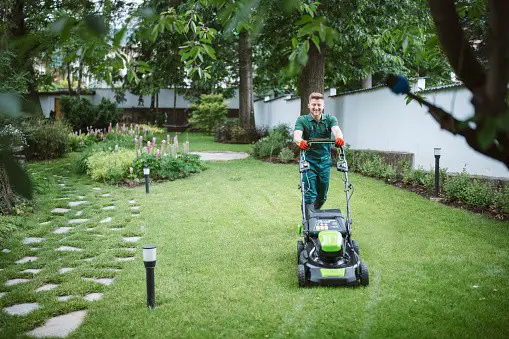Optimal lawn care essential tips, Property garden grass, Home gardening maintenance
Essential Tips for Optimal Lawn Care
12 September 2024
A lush, green lawn is a pride of homeownership and a welcoming feature of any property. Achieving and maintaining a beautiful lawn requires more than just occasional mowing; it involves a well-rounded approach to lawn care nampa id. Here are some essential tips to help you keep your lawn healthy, vibrant, and the envy of the neighborhood.
Know Your Grass Type
Understanding the type of grass in your lawn is fundamental to effective care. Different grass species have varying needs and optimal growing conditions. For instance:
Cool-Season Grasses: These thrive in cooler temperatures and include species like Kentucky Bluegrass, Fescue, and Ryegrass. They grow best in spring and fall.
Warm-Season Grasses: These grasses, such as Bermuda, Zoysia, and St. Augustine, flourish in hot weather and are ideal for summer.
Knowing your grass type will help you tailor your lawn care nampa id routine, including mowing height, watering schedule, and fertilization.
Mowing Tips for a Healthy Lawn
Proper mowing is crucial for lawn health. Follow these guidelines to ensure you’re mowing correctly:
Keep It Sharp: Use a sharp mower blade to ensure clean cuts. Dull blades tear the grass, leading to brown tips and increased vulnerability to disease.
Mow High: Set your mower to cut grass at the recommended height for your grass type. For most cool-season grasses, this is around 3 inches. Taller grass shades the soil, helping retain moisture and suppress weeds.
Don’t Cut Too Short: Avoid removing more than one-third of the grass height in a single mow. Cutting too short stresses the grass and can lead to lawn problems.
Water Wisely
Watering is essential for a thriving lawn, but over-watering or under-watering can be detrimental. Here’s how to water effectively:
Deep and Infrequent Watering: Water your lawn deeply once or twice a week rather than daily. This encourages deep root growth and makes your lawn more drought-resistant.
Early Morning Watering: Water in the early morning to reduce evaporation and allow the grass to dry before evening, which helps prevent fungal diseases.
Check Soil Moisture: Use a soil moisture meter or simply feel the soil to determine when it needs water. The top inch of soil should be dry before watering again.
Fertilize Properly
Fertilization provides essential nutrients that promote healthy growth. Here’s how to fertilize effectively:
Choose the Right Fertilizer: Use a balanced fertilizer or one tailored to your grass type and soil needs. A soil test can help determine the specific nutrients your lawn requires.
Follow Application Rates: Apply fertilizer according to the manufacturer’s recommendations. Over-fertilizing can harm your lawn and the environment.
Timing Matters: Fertilize cool-season grasses in early spring and fall, while warm-season grasses benefit from fertilization in late spring through summer.
Aerate Your Lawn
Aeration is a process that involves perforating the soil with holes to allow air, water, and nutrients to penetrate the roots. This practice helps alleviate soil compaction and promotes healthy growth. Aerate your lawn once a year, preferably in the fall for cool-season grasses or late spring for warm-season grasses.
Control Weeds and Pests
Weeds and pests can quickly diminish the health of your lawn. Here’s how to manage them:
Weed Control: Apply pre-emergent herbicides in early spring to prevent weed seeds from germinating. For existing weeds, use post-emergent herbicides or hand-pull them. Regular mowing and proper lawn care also help prevent weed growth.
Pest Management: Monitor your lawn for signs of pests, such as grubs or insects. Use appropriate insecticides or natural remedies as needed, and consider integrating beneficial insects like ladybugs to control pests.
Overseed and Repair
Lawns can develop bare spots or thin areas over time. Overseeding helps fill in these areas and improves overall lawn density. Here’s how to overseed effectively:
Prepare the Soil: Rake the soil to remove debris and loosen the surface. This helps the seeds make good contact with the soil.
Sow Seeds Evenly: Spread grass seed evenly over the area, following the recommended seeding rate. Lightly rake the soil again to cover the seeds.
Keep Moist: Water the area frequently until the new grass is established, keeping the soil consistently moist but not waterlogged.
Final Verdict
Maintaining a beautiful lawn requires a combination of knowledge, effort, and regular care. By understanding your grass type, mowing correctly, watering wisely, and addressing weeds and pests, you’ll be well on your way to achieving a lush, green lawn that enhances your home’s curb appeal.
With these tips, you can ensure your lawn remains healthy and vibrant throughout the year. Happy lawn caring!
Comments on this guide to Optimal lawn care essential tips article are welcome.
Property Lawn Care
Lawns Posts
DIY lawn care plan that is easy to maintain
How to Properly Take Care of Your Lawn
Avoid typical mistakes in lawn care
Taking care of a lawn with weeds guide
How to Properly Take Care of Your Lawn
Avoid typical mistakes in lawn care
Building Articles
Contemporary Property Articles – architectural selection below:
Comments / photos for the Optimal lawn care essential tips page welcome.








